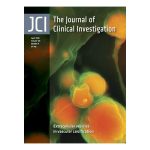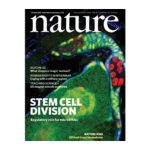Osteoblastic cells regulate the haematopoietic stem cell niche.
Calvi LM, Adams GB, Weibrecht KW, Weber JM, Olson DP, Knight MC, Martin RP, Schipani E, Divieti P, Bringhurst FR, Milner LA, Kronenberg HM, Scadden DT.
Abstract
Stem cell fate is influenced by specialized microenvironments that remain poorly defined in mammals. To explore the possibility that haematopoietic stem cells derive regulatory information from bone, accounting for the localization of haematopoiesis in bone marrow, we assessed mice that were genetically altered to produce osteoblast-specific, activated PTH/PTHrP receptors (PPRs). Here we show that PPR-stimulated osteoblastic cells that are increased in number produce high levels of the Notch ligand jagged 1 and support an increase in the number of haematopoietic stem cells with evidence of Notch1 activation in vivo. Furthermore, ligand-dependent activation of PPR with parathyroid hormone (PTH) increased the number of osteoblasts in stromal cultures, and augmented ex vivo primitive haematopoietic cell growth that was abrogated by gamma-secretase inhibition of Notch activation. An increase in the number of stem cells was observed in wild-type animals after PTH injection, and survival after bone marrow transplantation was markedly improved. Therefore, osteoblastic cells are a regulatory component of the haematopoietic stem cell niche in vivo that influences stem cell function through Notch activation. Niche constituent cells or signalling pathways provide pharmacological targets with therapeutic potential for stem-cell-based therapies.





